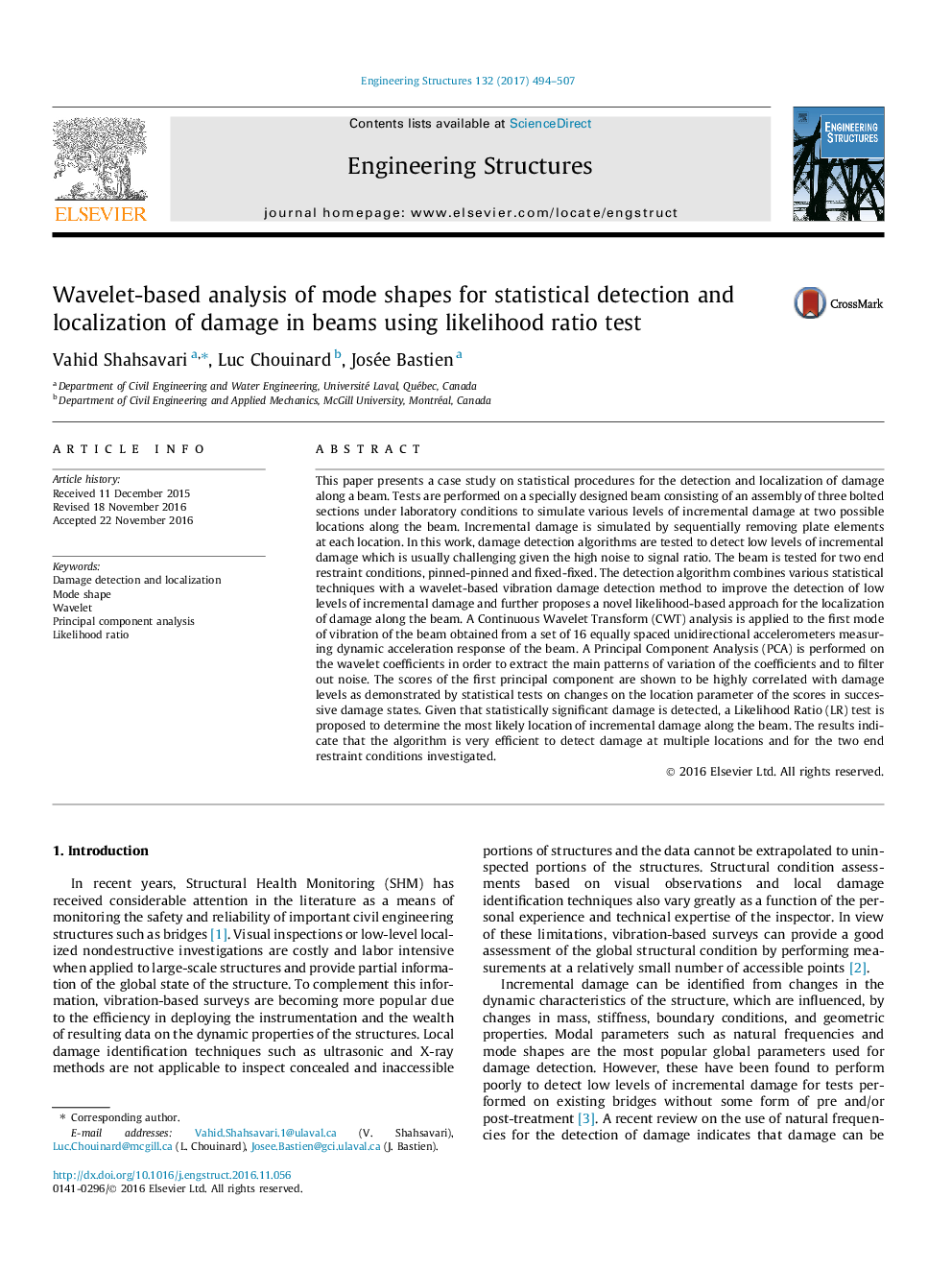| Article ID | Journal | Published Year | Pages | File Type |
|---|---|---|---|---|
| 4920450 | Engineering Structures | 2017 | 14 Pages |
Abstract
This paper presents a case study on statistical procedures for the detection and localization of damage along a beam. Tests are performed on a specially designed beam consisting of an assembly of three bolted sections under laboratory conditions to simulate various levels of incremental damage at two possible locations along the beam. Incremental damage is simulated by sequentially removing plate elements at each location. In this work, damage detection algorithms are tested to detect low levels of incremental damage which is usually challenging given the high noise to signal ratio. The beam is tested for two end restraint conditions, pinned-pinned and fixed-fixed. The detection algorithm combines various statistical techniques with a wavelet-based vibration damage detection method to improve the detection of low levels of incremental damage and further proposes a novel likelihood-based approach for the localization of damage along the beam. A Continuous Wavelet Transform (CWT) analysis is applied to the first mode of vibration of the beam obtained from a set of 16 equally spaced unidirectional accelerometers measuring dynamic acceleration response of the beam. A Principal Component Analysis (PCA) is performed on the wavelet coefficients in order to extract the main patterns of variation of the coefficients and to filter out noise. The scores of the first principal component are shown to be highly correlated with damage levels as demonstrated by statistical tests on changes on the location parameter of the scores in successive damage states. Given that statistically significant damage is detected, a Likelihood Ratio (LR) test is proposed to determine the most likely location of incremental damage along the beam. The results indicate that the algorithm is very efficient to detect damage at multiple locations and for the two end restraint conditions investigated.
Related Topics
Physical Sciences and Engineering
Earth and Planetary Sciences
Geotechnical Engineering and Engineering Geology
Authors
Vahid Shahsavari, Luc Chouinard, Josée Bastien,
